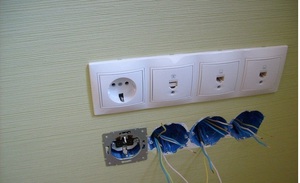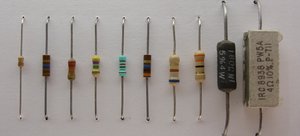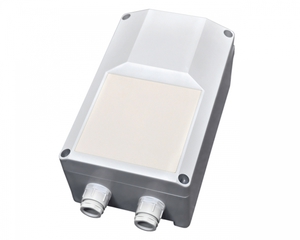Cable insulation resistance rate: range of cable products, types and rules of installation
Any type of cable has its own technical characteristics. One of the main electrical parameters is the insulation resistance.
Insulation resistance standards are information, which is the basis of all construction, maintenance and service work.
Since the design of each cable involves the presence of two cores of metal, they are always under the influence of various environmental factors. This effect when improperly used cables can lead to their complete failure and reduce this parameter, as resistance.
in addition, in the absence of insulation, a significant amount of energy is lost and, Consequently, may result in additional costs.
Assortment of cable products
At the moment, manufacturers offer a large number of different cables. They are one of the most common:
-
Communication cables
- Cables for general use
- Power cables
- Control cables
- Distribution cables
Each of the above products differs in its technical characteristics, unique design, functions. Resistance can have different levels. For the production of a certain type of cable uses its own technology, due to the scope of its use.
Insulation of conductive cores
For, to minimize the risk of failure of any type of cable, it is necessary to insulate its conductors. Dielectric material is used for this purpose, which has the property of preventing the passage of electric current and its resistance.
Insulating shells are made of such raw materials, like rubber, plastic and paper. It can be used as one of these materials, and several in different combinations. Each manufacturer uses its own materials and insulating covers for each type of its products. Currently on the market you can find insulated cable for absolutely any purpose.
Insulating materials
The type of material also depends on the purpose of the cable, from which the insulation will be made. Example, rubber is used as an insulating material when using cable products at high temperatures. This material is less exposed to the negative effects of high temperatures, than all the others currently available.
By means of isolation current-carrying cores of cables are reliably protected from external and internal negative factors. Insulation materials help minimize power loss and the risk of melting and flare-ups.
in addition, the probability of a short circuit when working with insulation is almost zero. Insulation rate is an indicator, equal to the magnitude of the current resistance in the system between the structural elements and the power supply.
Dielectric, which is used to create an insulating coating, after some period of time loses its original properties, the resistance of the material decreases, as a result it becomes unusable. Therefore, it is necessary to check regularly, whether the properties of the insulating material have changed.
For this purpose, each manufacturer sets a special standard, which is on the product. Insulation resistance rate The resistance index of insulating material to DC voltage is one of the main indicators of cable products.
Technical passport
This value is determined and specified by the manufacturer. The necessary information can be found in the technical documentation, operating instructions or in the state standardization system.
When sending cables for sale, the manufacturer must attach the relevant document, which will contain all the necessary information. It should be noted, what to use in practice information about such an important parameter, as resistance, specified in the technical documentation, must be correlated with its total length.
In that case, if the size of the cable exceeds the mark in 1000 meters, then the resistance rate specified in the technical passport must be divided by a given number. If less - then multiply by the length of the cable. The data obtained as a result of mathematical calculations can be used to estimate the cable line.
Norms of climatic conditions
It is necessary to remember, that weather conditions cannot be ignored when measuring cable lines, in which works are carried out. This factor has a very serious impact on the results obtained.
In the vast majority of cases, the technical data sheet of cable products specifies the standards for air temperature, equal to 20 degrees. For this reason, in addition to the temperature of the air must also take into account its humidity. Example, in the rain the result obtained may be an order of magnitude lower than the real one.
To determine the exact data it is necessary to dry the surface, on which the terminals are located. Some types of cables may also have an insulation resistance between the sheath and the ground. In order to apply this value for practical purposes, it must also be correlated with the size of the cable. The following standards are set for power cables:
- If the voltage is less 1000 V, insulation resistance is less 10 IOM or not normalized at all.
- In systems with voltages above 1000 V, the insulation resistance index should not be less than the value 0,5 Mom.
For uninterrupted operation of the control type of cable products, the level of insulation resistance must be a minimum 0,5 Mom.



